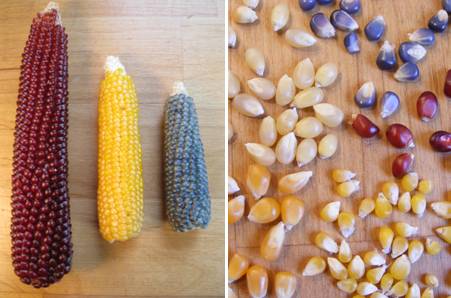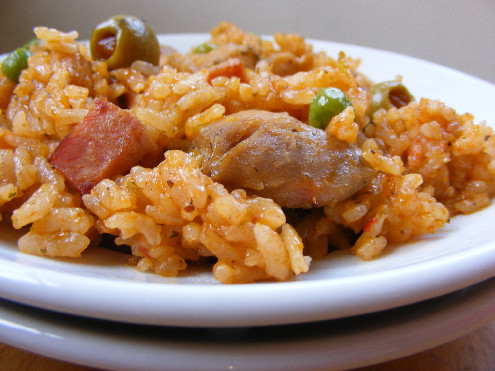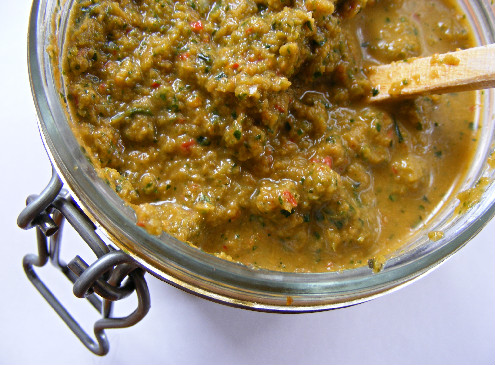Popcorn Basics: How to Make Great Popcorn
Friday, April 30th, 2010Normally, I like food with exotic flavors and sauces. But, popcorn, I like simple – popped fresh with a dash of salt and, on occasion, lightly buttered.
After talking with folks here and there about how they eat p-corn, it seems I’m not alone. Most adults, or at least the ones I spoke with, prefer to nosh on popcorn that’s simply salted and buttered. It’s most often eaten while watching flicks.
So this post is about the basics. No fancy toppings or long ingredient list. (My shortest recipe to date.) Just some guidance on making great popcorn at home.
I do not claim to be an expert. But, we know a bit about popcorn in our house since we make it two to three times per week. Roughly speaking, I (yes, just me) eat about 100 quarts of popped popcorn a year. Note: the average American generally consumes about 44 quarts of per year.
Let me know how you like your popcorn? Or, if you employ any interesting techniques. Before we get to popping, here’s some helpful info:
Why does popcorn pop?
The outer shell of popcorn kernels (the pericarp) is tougher than regular corn and can withstand greater pressure. This special maize “pops” when heated because the moisture inside the kernel swells as it cooks, rapidly expanding to a point where the shell cannot contain the explosion. It bursts, turning it inside out.
Butterfly v. Mushroom?
These terms refer to the “flake” shape. Whether it’s marked “butterfly” or not, it’s the kind found in most grocery stores. Butterfly popcorn is irregular in shape with protruding “wings.” The mushroom variety is ball-shaped with less distinct wings. The main difference comes down to texture. Popped butterfly popcorn is light and fluffy, with wings that are delicate. Mushroom popcorn is generally preferred for candied and coated popcorn because it is denser and less delicate.

Boulder Popcorn heirloom (left); Popcorn varieties (right, clockwise - top right): Kailey's Kernels, Ryder's Red, Cambria's Cream from Boulder Popcorn, large yellow and white from the grocery store.
Which type: yellow, white, colored?
Regardless of the color you buy, it’ll pop up some color of white. If you’re shopping for popcorn at a regular grocery store and they have white and yellow kernels, choose white. White popcorn pops lighter and crisper. The yellow has a tougher hull, which makes it much chewier. I also find it sticks in my teeth.
If you have access to other varieties, definitely give them a try. There are several companies selling heirloom popcorn online and at local farmers’ markets. In the Denver area, there’s Boulder Popcorn.
Boulder Popcorn sells three heirloom varieties: red, blue-grey and yellow. The kernels are smaller than what you find in the store and are much lighter and crisp when popped. They carry Ryder’s Red, Kailey’s Kernels (hulless), and Cambria’s Cream (hulless). Note, the hulless varieties still have hulls but they are less distinct, easier on the teeth and to digest. Their popcorn is natural and non-Genetically Modified. This was so good, we ate it plain – no salt or butter. Each variety is unique: the red pops large and fluffy; the blue has a medium, bright white wings with a slight nuttiness; and the cream is smooth and creamy.
Addendum 10/17/10: Andrew Knowlton, the BA Foodist (Bon Appetit) is also a fan of Boulder Popcorn. In the October 2010 issue and on the BA Foodist blog he says Boulder Popcorn is his current favorite brand of popcorn.
What kind of popper?
There’s a lot on the market from hot air poppers to fancy/gimmicky contraptions. However, a no fail method and my preferred equipment is a heavy pot with a lid.
What if I have a lot of duds?
It’s likely the moisture content is low. Don’t throw it out, you can fix it. Put your kernels in a glass jar with about a tablespoon of water. Cover, shake and refrigerate for a day or two. The moisture will absorb into the popcorn and should pop up fluffy. Just make sure the kernels are dry first. Researchers say the moisture content of popcorn kernels should be between 11 to 14 percent.
What kind of fat or oil?
I’ve popped it in olive oil, coconut oil, butter and bacon grease. But, we still prefer canola oil.
What about leftovers?
Heat oven to 200 degrees and reheat on a cookie sheet for about 20 minutes. However, I think the best popcorn is fresh popped.








